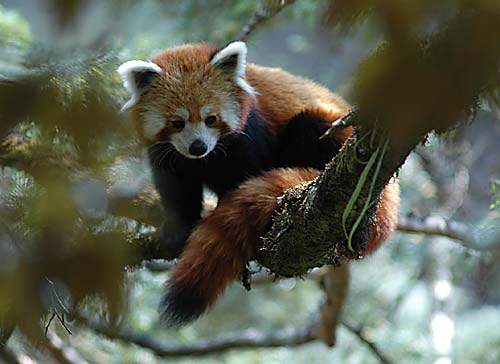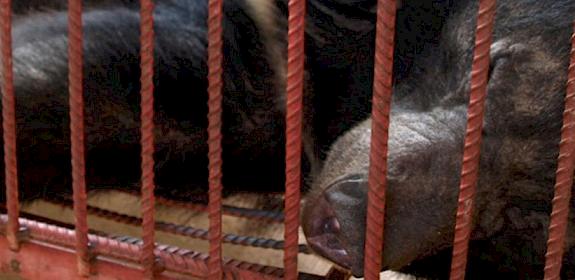Red Panda trade highlighted
Cambridge, UK, 23rd December 2010—two recent publications draw attention to the potential threat posed by trade in Red Pandas.

Red Pandas Ailurus fulgens are the only “true” panda species; they are found in mountainous forests of the Himalayas and adjacent mountain ranges in south-western China, ranging discontinuously from Central Nepal through Bhutan and North-East India (where it is the State animal in Sikkim) and Myanmar, into the Tibetan Autonomous Region, Yunnan, Sichuan and even into the Qingling Mountains in Shaanxi, China.
The attractively coloured fur of Red Pandas has long held an appeal to people, and the animals have traditionally been hunted, for example to make hats and coats worn by the Yi minority in Yunnan Province. Such garments are still worn today, although it remains unclear whether they are from recently taken animals.
Today the Red Panda is afforded national protection throughout its range, and all commercial trade has been banned under CITES (the Convention on International Trade in Endangered Species of Wild Fauna and Flora) since 1995.
The species is listed by IUCN as Vulnerable, with an estimated population of fewer than 10,000 fecund individuals.
Two recent publications—Red Panda: Biology and conservation of the first panda by Angela R. Glatston and Sikkim—under the sign of the red panda by several authors including Samir Sinha, Head of TRAFFIC India and Roland Melisch, Senior Programme Director with TRAFFIC, both attempt to assess the threat posed by trade to the Red Panda. The study is also available in German.
The studies find little evidence of ongoing trade in Red Pandas for their fur: only one seizure of panda parts—a shipment of carcasses from Japan to the US in 1995—has been reported by Parties to CITES, while a study of wildlife trade along the Yunnan (China)–Vietnam border in the late 1990s found only one case of a Red Panda fur on sale.
However, Roland Melisch, who wrote a chapter about a preliminary assessment of Red Panda trade in Glatston’s publication said: “Although traditional hunting of Red Pandas for their fur appears to be mostly under control, fur and fur parts of Red Pandas are still occasionally reported as illegally offered and traded in Nepal. Furthermore, a completely new threat was revealed in 2009 when a business traveler visiting Guangdong, China, was offered fresh game meat from a caged Red Panda in a restaurant.”
The scale and potential threat posed by the capture of Red Pandas for human consumption is presently unknown, but the sale of wild meat is widespread in China’s southern provinces, despite government efforts to prevent the sale of protected species.
“International co-operation through wildlife enforcement networks, like SAWEN in South Asia and ASEAN-WEN in South-East Asia, can be an important mechanism for countries to work together to detect and deter illicit trafficking of Asia’s natural heritage,” said Samir Sinha, Head of TRAFFIC India.
“For a species that occurs naturally at low density, even low levels of hunting could pose a serious threat to Red Pandas and is a situation that demands close monitoring,” said Melisch.



